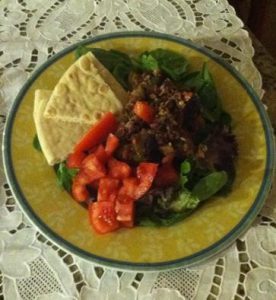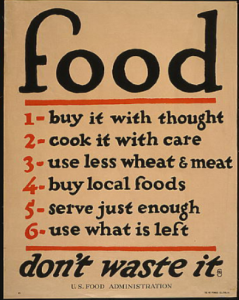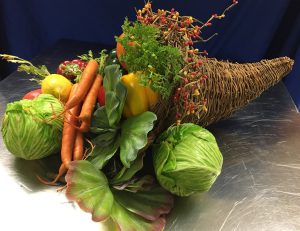by Heidi Copeland | Aug 7, 2017
 Can you believe it is that time of year already to sneak some zucchini on your neighbor’s porch! Honestly, it is a day to celebrate. And celebrate we should! It is the lucky neighbor who profits from the gardeners abundant harvest. Nonetheless, what can one do with all that zucchini?
Can you believe it is that time of year already to sneak some zucchini on your neighbor’s porch! Honestly, it is a day to celebrate. And celebrate we should! It is the lucky neighbor who profits from the gardeners abundant harvest. Nonetheless, what can one do with all that zucchini?
The late, Julia Child bestows the virtue of ratatouille in many of her books yet it seemed to take an animated rat in the award winning Pixar film to suggest ratatouille might be something to try. Really! Ratatouille, a traditional French Provençal stewed vegetable dish, originating in Nice is a mostly Mediterranean fare, however, we too have all the local produce to adapt this delicious dish.
How? What do you need? Ratatouille can be made just the way you like it but start with the basics: onions, eggplant, zucchini, garlic, tomatoes, red, green or yellow peppers, mushrooms, and fresh or dried herbs and a pinch of salt and pepper.
Ratatouille is typically served as a side dish, but may also be served as a vegetable soup, or a meal on its own accompanied by pasta, rice or bread. Ratatouille is good as a topping for your favorite grilled meat or fish, or as a filling in a simple omelet. Did I mention it can be added to quiche? Or stuffed into a pita pocket?
There is as much deliberation on how to make a traditional ratatouille as there is about how you eat it. Do you layer it and bake it? Is it sautéed? Is it simmered? Is it eaten as a side dish, a main dish or a sandwich filling? I’ve tried them all and even found success using a slow-cooker.
Try your hand at this simple yet elegantly adaptable vegetable dish.
The provided very basic recipe can be adapted to suit your personal/regional taste. Don’t like eggplant? Leave it out! Have a lot of okra or yellow squash? Add it! Like olives, nuts or raisins? Add them to your portion. Rather not use vegetable oil? Don’t! Want to cover it in your favorite spicy olive oil? Do you have some extra zucchini? I think you get the picture.
Ratatouille does not have to look like the vibrant Pixar version yet, it is still going to garner up gracious comments and acknowledgements from those you love and cook for. Whip up your version to savor today!
Ratatouille
Ingredients:
2 Tablespoons any kind of oil
4 medium onions, chopped – any color, any kind
2 medium eggplant, cut into 3/4-inch cubes
4 garlic cloves, minced
6 medium zucchini, cut into 1-inch cubes
2 large green, red or yellow bell pepper seeded and cut in 1” cubes
8 to 10 ripe tomatoes, peeled, seeded coarsely chopped (or use a can of fire roasted diced tomatoes)
3 fresh thyme sprigs (or to taste)
1 fresh rosemary sprig (or to taste)
1 dried or two fresh bay leaves
1/2 tsp. salt
1/2 tsp. freshly ground pepper
Directions:
In a BIG pot over medium heat, warm the oil. When it is hot, reduce the heat to medium, add the onions and sauté until translucent, about 2 minutes. Add the eggplant and garlic and sauté, stirring often, until the eggplant cubes are slightly softened, 3 to 4 minutes.
Add the zucchini and bell pepper and sauté, stirring and turning, until softened, 4 to 5 minutes more. Add the tomatoes, thyme, rosemary, bay leaf, salt and pepper, and stir and turn for 2 to 3 minutes more.
Cover, reduce the heat to low and cook, stirring occasionally, until the vegetables are soft and have somewhat blended together, about 60 minutes. (slow cooker at least 4 hours on high)
Remove from heat. Garnish with minced fresh basil. Transfer to a serving bowl and serve hot, at room temperature or cold. Serves at least 10.
by Heidi Copeland | Apr 3, 2017
Earth Day: an issue of sustainability!
 Have you ever thought about Earth Day, you know, that one day a year that falls on April 22nd?
Have you ever thought about Earth Day, you know, that one day a year that falls on April 22nd?
Earth Day was founded in 1970 by Gaylord Nelson, a U.S. Senator from Wisconsin, and sought to focus on the environment and how we can create healthy and sustainable surroundings. Almost a half-century later, the principals of Earth Day remain the same, and we continue to come up with ways to preserve, or make our environment a sustainable one.
As a consumer, what can we do to practice environmental sustainability?
We have many opportunities, Take food for instance. As a nation not only are we becoming super-sized but so is our food-related waste.
In August of 2012, the Natural Resources Defense Council (NRDC) issued a paper explaining that America Is Losing Up to 40 Percent of Its Food from Farm to Fork to Landfill. Yes, that is right; nearly 40 percent of our food supply is wasted (yet, one in eight Americans struggles to put food on the table).
The reasons for such waste are multifaceted; however, consumers are a major contributor to the problem. Key findings include:
The average American family of four ends up throwing away an equivalent of up to $2,275 annually in food.
In average American households, 2/3 of household waste is due to food spoilage:
40 percent of fresh fish
23 percent of eggs
20 percent of milk
Citrus fruits and cherries top the list for fruits, and sweet potatoes, onions, and greens are commonly wasted vegetables
Other household waste includes:
cooking too much
serving too much
over purchasing
plate waste
holiday celebrations
Wasted food also translates into wasted natural resources. It takes energy, water and farmland to grow, transport, and store food. Additionally, food waste is the single largest component of solid waste in U.S. landfills. By wasting less food, each of us can be an essential component in solving this increasing problem.
In 1917, the U.S. Food Administration distributed war effort posters in hopes of convincing the public to conserve food resources with expectations that this campaign would maintain an adequate supply of food for the troops fighting wars as well as for American households.
These century old practices are applicable today.
- Buy it with thought! We can be mindless in the way we purchase food in much the same way we can be mindless in how we eat our food. Make thoughtful purchases, as wise choices are better for both our planet and our body.
- Cook it with care. In the end, checking items we have on hand, planning menus and shopping with care makes us mindful and aware.
- Use less wheat & meat. In fact, Meatless Mondays was a sustainable war effort too! Practicing this use less effort provokes mindful eating of resource intense products.
- Buy local. Hardly a buzzword, the idea has been around for a long time. By mindfully purchasing local products, we are not stuffing items into our grocery carts without reflection on where the food comes from.
- Serve just enough. Choose My Plate, https://www.choosemyplate.gov/MyPlate gives a great visual representation of the foods each of us need on our plate. Not only can serving enough help our wallet, but it can help our waistline!
- Use what is left. Using what we have is a wise use of resources for both Mother Nature, personal finances and our health. Try eating your leftovers instead of throwing them into the landfill.
Norman Vincent Peale says, Change your thoughts and you change your world. Can the same thinking apply to our behavior? If each and every one of us made a small behavior change it could help change the world and make us better stewards of our environment, not just on April 22nd, but every day.
FOR MORE INFORMATION:
https://www.nrdc.org/issues/food-waste
http://www.nrdc.org/living/eatingwell/saving-leftovers-saves-money-resources.asp
by Heidi Copeland | Jan 23, 2017
 In the early 70’s Gary Iskowitz, was doing graduate work as well as teaching tax law while working for the Internal Revenue Service (IRS) agency. Mr. Iskowitz saw a growing problem with questionable tax preparers who were scamming low-income people in his area. He did not like what he saw! Consequently, he proposed that he train a minimal number (10) of likeminded student volunteers to go into the community to prepare free tax returns for underserved residents. People lined up around the block waiting for them.
In the early 70’s Gary Iskowitz, was doing graduate work as well as teaching tax law while working for the Internal Revenue Service (IRS) agency. Mr. Iskowitz saw a growing problem with questionable tax preparers who were scamming low-income people in his area. He did not like what he saw! Consequently, he proposed that he train a minimal number (10) of likeminded student volunteers to go into the community to prepare free tax returns for underserved residents. People lined up around the block waiting for them.
The following year, almost 100 students were recruited and trained to prepare free tax returns for low-income residents. The rest, they say, is history!
This college-volunteer effort significantly strengthened the Volunteer Income Tax Assistance (VITA) program. Now, more than 40 years later, VITA is still going strong.
VITA is still designed to promote and support free tax preparation service for the underserved, in both urban and non-urban locations. Service is targeted to low-to-moderate income individuals, persons with disabilities, the elderly, and limited English speaking.
Why? Just as in Gary Iskowitz’ time, this program is an effort to provide both a valuable community service and a powerful learning experience for the participants. Not only does a tax payer get their taxes done for free, the local community benefits from the monies spent by the tax payer. Plus, the IRS is pleased because citizens are in compliance with federal law.
Volunteers come from the local communities they serve.
If you plan to take advantage of any of the VITA programs this year, be sure to bring the proper documentation. A return cannot be prepared without the appropriate certification.
And know that in an effort to stop fraudulent tax return payments, beginning in 2017, if you claim the Earned Income Tax Credit (EITC) or Additional Child Tax Credit (ACTC) on your tax return, the IRS must hold your refund until at least February 15 — even the portion not associated with EITC or ACTC.
What to Bring to Your Local VITA Site:
- Proof of identification (photo ID)
- Social Security cards for you, your spouse and dependents on the tax return or a Social Security number verification letter issued by the Social Security Administration
- An Individual Taxpayer Identification Number (ITIN) assignment letter may be substituted for you, your spouse and your dependents if you do not have a Social Security number
- Proof of foreign status, if applying for an ITIN
- Birth dates for you, your spouse and dependents on the tax return
- Wage and earning statements (Form W-2, W-2G, 1099-R,1099-Misc) from all employers
- Interest and dividend statements from banks (Forms 1099)
- A copy of last year’s federal and state returns, if available
- Proof of bank account routing and account numbers for direct deposit such as a blank check
- To file taxes electronically on a married-filing-joint tax return, both spouses must be present to sign the required forms
- Total paid for daycare provider and the daycare provider’s tax identifying number such as their Social Security number or business Employer Identification Number
- Forms 1095-A, B or C, Affordable Health Care Statements
Start 2017 off right! Being well-organized and getting your information together can save you a lot of time and maybe even money!
by Heidi Copeland | Nov 30, 2016
 Many of us can agree, being around family can make simple things in life more special! Whether it’s time spent together during holidays, celebrating birthdays, or simply enjoying togetherness, family events can make life memorable. Why wait until special occasions to show your family that they matter? Dining together can make simple things feel special every day!
Many of us can agree, being around family can make simple things in life more special! Whether it’s time spent together during holidays, celebrating birthdays, or simply enjoying togetherness, family events can make life memorable. Why wait until special occasions to show your family that they matter? Dining together can make simple things feel special every day!
Dining in with your family is one of the easiest ways to incorporate spending quality time together… on a daily basis. Knowing that schedules can make this task very difficult to implement but understanding the benefits will help encourage us to make the time for this important ritual. Research studies show that frequent, positive mealtime experiences can lead to better communication among family members, improved performance at school, and enhanced reading levels, as well as better overall nutrition. During meals, parents are able to teach their children how to actively listen and express themselves through conversation. As a result, these mealtime conversations expand children’s vocabulary and increase their reading skills. Equally important is that eating together helps encourage healthy eating habits.
Make plans to set aside December 3, 2016 as Dine in Day. This initiative, started three years ago by the American Association of Family and Consumer Sciences (AAFCS) promotes the importance of group meals in fostering family and community relationships, encouraging healthy diets and stretching food dollars. AAFCS cares about family mealtimes and is spreading awareness.
Here are some Dine In Day conversation starters and tips to create an enjoyable and relaxing atmosphere for your family:
- Start with minimal distractions. Turn off all devises…televisions, iPads, laptops, and set aside cell phones.
- For families with preschoolers here are some conversation starters
- If you could be any animal in the world for a day, which animal would it be? Why?
- What made you happy (or sad) today? Why?
- Who did you sit next to (or play with) at school today? What did you talk about?
- Would you like to help plan dinner for tomorrow night? What foods would you like to help cook for dinner?
- For families with adolescents and young adults here are some conversation starters
- Ask about their hobbies, clubs, or extracurricular activities
- If you could have one day free of all responsibilities what would you do?
- Share funny stories and discuss light current events
Remember, eating together matters. Try to create a positive atmosphere before and during meals.
- Respect and involve every family member giving everyone an equal opportunity to share an opinion without teasing or criticizing.
- Download free conversation starters at www.school-wellness.org
- Background music can be a nice addition!
Individuals, families and groups can pledge to dine in December 3 at http://bit.ly/2dPj58G . Diners can also participate on social media by sharing photos and using the hashtags #FCSdayFL and #healthyfamselfie.
Build stronger relationships and positively impact your children’s growing values. Don’t wait until special occasions to reap the dining together benefits, dine in now!
For more information on the importance of family meal
- Lyttle and E. Baugh, The Importance of Family Dinners (FCS2286), Department of Family, Youth and Community Sciences (Archived).
- Paredes and K. Shelnutt, Raising Healthy Children: The Importance of Family Meals (FCS8925), Department of Family, Youth and Community Sciences (06/2010).
Tamarah Ulysse FSU Intern, Family and Child Sciences
Edited by: Heidi Copeland
Extension Agent I
Family and Consumer Sciences
615 Paul Russell Road
Tallahassee, FL 32301-7060
850/606-5200

by Heidi Copeland | Nov 16, 2016
 With Thanksgiving around the corner, it is only fitting to display a cornucopia. Not only is this horn of plenty a universal symbol of abundance, it is truly timely! Florida is plentiful with fresh produce this time of year. According to the Florida Department of Agriculture and Consumer Services (FDACS), avocados, bell peppers, carambola, cucumbers, eggplant, grapefruit, guava, mushrooms, oranges, passion fruit, peanuts, radishes, snap beans, squash, strawberries, sweet corn, tangerines, and tomatoes are in season now.
With Thanksgiving around the corner, it is only fitting to display a cornucopia. Not only is this horn of plenty a universal symbol of abundance, it is truly timely! Florida is plentiful with fresh produce this time of year. According to the Florida Department of Agriculture and Consumer Services (FDACS), avocados, bell peppers, carambola, cucumbers, eggplant, grapefruit, guava, mushrooms, oranges, passion fruit, peanuts, radishes, snap beans, squash, strawberries, sweet corn, tangerines, and tomatoes are in season now.
Locally, Red Hills Small Farm Alliance boasts an even greater array of foods grown within our community. Local growers are producing vegetables, as well as fresh herbs, fruits, and nuts! Foods growing in the community include arugula, Asian greens, eggplants, baby Pac Choi, kale, butter lettuce, watercress, elephant garlic, peppers (aji dulce, datil, habanero, banana, and serrano), salad turnips, mustard greens, okra, sweet potatoes, persimmons, Meyer lemons, satsuma/tangerines, ponderosa lemons, and herbs such as African blue basil, apple mint, ginger, oregano, garlic chives, lemon balm mint, and rosemary. Plus, the trees are full and American chestnuts and pecans have started falling in Monticello! It is a great year for local produce!
With the abundance of fresh seasonal produce available locally, it is easy peasy to build a healthy plate. MyPlate, the illustration of the five food groups that are the building blocks for a healthy diet, encourages the consumption of a variety of fruits and vegetables every day. In general, 1 cup of raw or cooked vegetables or vegetable juice or 2 cups of raw leafy greens can be considered as one serving from the Vegetable Group. Any vegetable or 100% vegetable juice counts as a member of the Vegetable Group. Vegetables may be raw or cooked, fresh, frozen, canned, or dried/dehydrated, and may be eaten whole, cut-up, or mashed.
Based on their nutrient content, vegetables are organized into 5 subgroups: dark-green vegetables, starchy vegetables, red and orange vegetables, beans and peas, and other vegetables.
Similarly, fruit is a building block, too. Overall, 1 cup of fruit or 100% fruit juice, or ½ cup of dried fruit can be considered as one serving from the MyPlate Fruit Group.
Plus, ½ ounce of nuts or seeds can be considered as a one ounce-equivalent from the Protein portion of MyPlate.
Alice Henneman, MS RDN, Extension Educator with the University of Nebraska Lincoln, suggests an easy way to incorporate a wide variety of vegetables into a daily diet is by making a casserole from what you have on hand (and even add a few nuts for depth of flavor). Why not delve into the Florida Fresh horn of plenty and whip up something good this month? Don’t forget to eat your fruit for dessert!
“Make-Your-Own” Casserole
Makes 6 servings
General Directions:
Select food(s) from each category or use your own favorites. Combine in a buttered 2 to 2 1/2 quart casserole dish. Cover and bake at 350 F for about 50 minutes to 1 hour or microwave using 50% power for about 15 to 30 minutes, rotating or stirring as necessary. Heat until steaming hot (165 F) throughout.
Starch: select ONE:
- 4 cups noodles or pasta cooked
- 2 cups cooked long-grain white or brown rice (or other grain)
Protein: select ONE:
- 2 cups cooked ground meat
- 2 cups cooked and diced chicken, turkey, ham, beef, or pork
- 2 cups chopped hard-cooked egg
- 2 cups fish or seafood, flaked (you can use canned)
- 2 cups cooked or canned beans (kidney, etc.)
Vegetable: select ONE or add a variety:
- 1 (10-oz.) package thawed and drained frozen spinach, broccoli, green beans, or green peas
- 1 16-oz. can green beans, peas, carrots, or corn
- 2 cups sliced fresh zucchini, bell peppers, mushrooms, snap beans, squash, sweet corn, or tomatoes
Sauce – select ONE:
- 2 cups white sauce or 1 can sauce-type soup (mushroom, celery, cheese, tomato, etc.) mixed with milk to make 2 cups
- 1 16-oz can diced tomatoes with juice
Flavor: select ONE or MORE:
- 1/2 cup chopped celery, 1/4 cup chopped onion, 1/4 cup sliced black olives
- 1 – 2 teaspoons mixed dried leaf herbs (basil, thyme, marjoram, savory)
- Fresh Garlic to taste
- Salt and pepper to taste
Topping – select ONE or MORE:
If desired, after heating, place on top:
- 2 tablespoons grated Parmesan cheese
- 1/4 cup shredded Swiss, Cheddar, or Monterey Jack cheese
- 1/4 cup buttered bread crumbs
- 1/4 to 1/2 cup canned fried onion rings
Return casserole with topping(s), uncovered, to oven for about 10 minutes or to microwave for about 2 minutes.
 Can you believe it is that time of year already to sneak some zucchini on your neighbor’s porch! Honestly, it is a day to celebrate. And celebrate we should! It is the lucky neighbor who profits from the gardeners abundant harvest. Nonetheless, what can one do with all that zucchini?
Can you believe it is that time of year already to sneak some zucchini on your neighbor’s porch! Honestly, it is a day to celebrate. And celebrate we should! It is the lucky neighbor who profits from the gardeners abundant harvest. Nonetheless, what can one do with all that zucchini?




